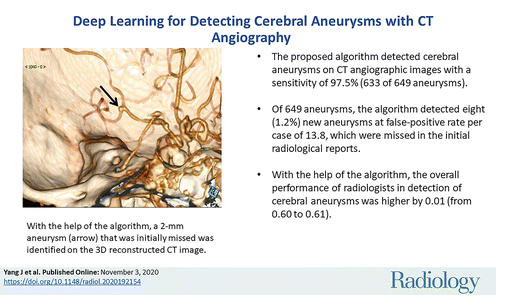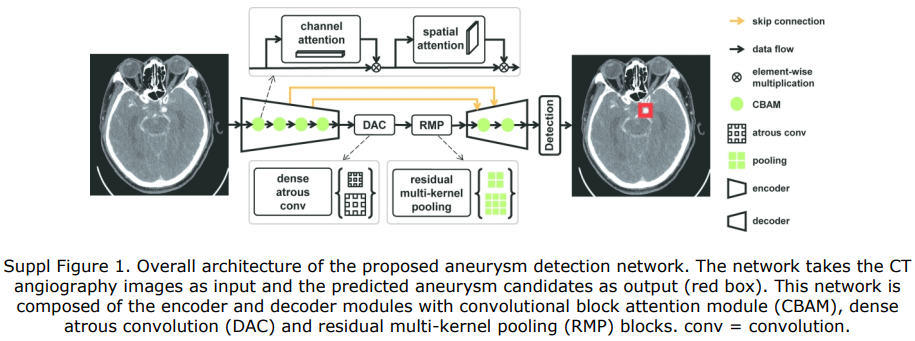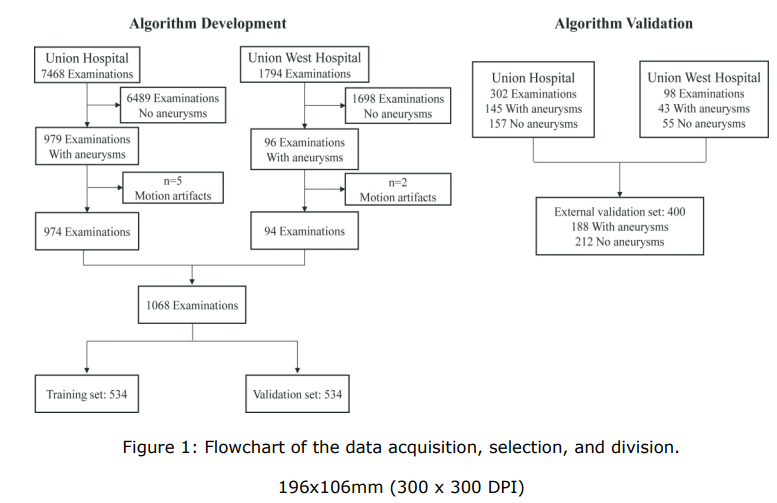AI Can Help Detect Cerebral Aneurysms, Radiology Published HUAWEI CLOUD’s Latest Achievements
Nov 09, 2020
Recently, a new study was published online on Radiology, demonstrating that AI can assist doctors in finding cerebral aneurysm with a sensitivity of 97.5%.
The article, entitled Deep Learning-Based Algorithm for Detecting Cerebral Aneurysms on CT Angiography Images, shows that the HUAWEI CLOUD EI Innovation Lab , Huazhong University of Science and Technology, and Department of Radiology at Tongji Medical College of HUST’s Union Hospital have developed a fully automated and highly sensitive algorithm for detecting cerebral aneurysms based on CTA-based images.
Full article: https://pubs.rsna.org/doi/10.1148/radiol.2020192154

Radiology released the latest joint research results of HUAWEI CLOUD and Huazhong University of Science and Technology
As the article declared, Cerebral aneurysm is a cerebrovascular disorder in which weakness in the wall of a cerebral artery or vein causes a localized dilation or ballooning of the blood vessel. Due to its high risk of leakage or rupture, it is regarded the top 3 cause of cerebrovascular disease. Cerebral aneurysm causes about 80 to 90% Nontraumatic Subarachnoid Hemorrhage (SAH), a serious brain disease with a mortality rate of 23%-51% and a permanent disability risk of 10%-20%. Early diagnosis and treatment are essential. Aneurysm can easily be overlooked for it can be anywhere in unexpected forms in our brains, so it has high requirements for doctors.
The risk of aneurysm rupture depends on the size, shape and location of the aneurysm, so detection and feature extraction of the aneurysm are essential to the treatment.
CT angiography (CTA) is currently the main technique for evaluating intracranial aneurysms. But even with CTA images, diagnosis of aneurysms usually requires long time because of the small size and the complexity of intracranial blood vessels. Even professional radiologists might miss some small aneurysms.
The article shows that the HUAWEI CLOUD EI Innovation Lab , Huazhong University of Science and Technology, and Wuhan Union Hospital have developed a fully automated and highly sensitive algorithm for detecting cerebral aneurysms based on CTA-based images. The algorithm is developed and trained on HUAWEI CLOUD ModelArts platform. With data preprocessing, semi-automated data labeling, distributed training, automated model building, and model deployment on devices, edges, and clouds, ModelArts helps AI developers quickly build models and easily manage the AI development lifecycle.
The algorithm includes an encoder and a decoder, and uses dense hole convolution (DAC) and residual multi-core pooling (RMP) modules between them. The input CTA image is resampled to a resolution of 0.39 x 0.39 x 0.39 mm3. The algorithm output provides information such as the aneurysm occurrence probability, location, and diameter. Bounding boxes for suspicious aneurysms will be drawn on the original CTA image.

The study used CTA data from 534 patients to train the deep learning detection algorithm, which was then validated on 534 other cases. Of the 649 aneurysms detected manually in the verification set, 633 were recognized by the algorithm, and the sensitivity reached 97.5%. The algorithm also detected eight new aneurysms, which were ignored in the initial manual diagnosis. Six of the eight aneurysms are less than 3 mm in diameter, and the other two are between 3 mm and 5 mm, which indicates that the new algorithm has very good performance for micro aneurysms.


In order to further verify the effect of this algorithm on radiologists, 400 cases of CTA images were collected as external test sets. Four radiologists interpreted 400 cases of CTA images (188 positive and 212 negative) without and with algorithmic assistance. Statistical analysis revealed that algorithm assistance enhanced radiologists' performance. The improvement was most pronounced in the less experienced radiologists.

Xi Long, Ph.D., from the Department of Radiology at Tongji Medical College’s Union Hospital in Wuhan, who participated in the joint project, said: “The developed deep-learning system has shown excellent performance in detecting aneurysms. We found some aneurysms that were overlooked by the human readers on the initial reports, but they were successfully depicted by the deep-learning system."
The results suggest that the deep learning algorithm has promise as a supportive tool for detecting cerebral aneurysms with a potential to be used clinically for a second opinion during interpretation of head CT angiography images.
In terms of basic medical research, the HUAWEI CLOUD EI Innovation Lab has invested heavily in resolving major technical problems in the medical field. Related papers have been delivered to the top journals of the medical industry, and have achieved industry-leading awards in multiple challenge events, such as LUNA-2016, HC-2018, ISLES-2018, and MICCAI2019.


